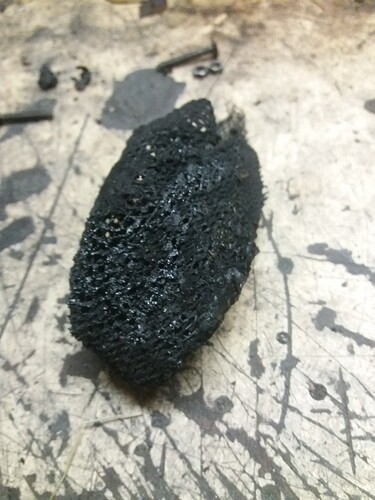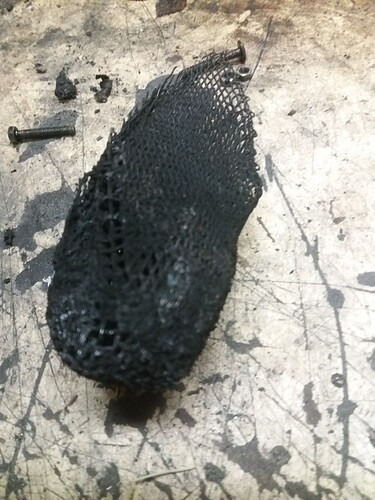Fantastic talk here guys! Great marriadge of theory and experiances.
Steve, l agree with you saying that the tars MUST oxidise in the uper part of the gasifier, to give clean gas. At least the vast majority.
However, the reaction is not instant and requires some help.
3 things make reactions happen faster, heat, time and stirring (turbolence). Thats basic chemistry. So, if one parameter is reduced, tho other one or 2 must be increased for the same resault.
We can only increase temperature to a point so thats limited in a wood gasifier. Plus gasification is endothermic so we loose heat fast.
We can increase time and thats what a WK does, along with a slight taper of the charbed and thus velocity increase.
A lmbert goes all the way speed and stearing. If you will, a WK is a slowcooker, cooking food till in falls apart, but a Imbert is a Smoothie blender 
From the nozzles down, heat starts to fall so in order to keep the gases flowing at the same speed, the diameter needs to be gradualy lower, hence the restriction. But it comes at a price of more drag and restriction heat-suffering, plus potentialy heat losses.
Bob, spot on on the answer to “where the charbed starts”!
To shortly summarise what l see when l think “perfect gasifier”:
-
A WK is great by it self but takes a lot of space, weight and skill to make. So, we take that away and only keep its geometry; air jets and a bit of taper towards the end. Put away the finned hevy duty firetube and rather invest in better insulation. A WK with its fins does just that anyway, conserve heat but not trugh insulation but recirculation. Works but costs in weight…
-
then, to decrease the size/volume of a true WK we either need to increase the temperature or turbolence. Turbolence comes at a cost of drag and is not optimal. So, boost the temperature!
Harvest as much of the energy from the gas via heating incomeing air, but thats still not enaugh. We need more heat!
So, we borrow the heat from the system that has too much of it. A charcoal gasifier 
Its just as simple as that. Add just 10% by volume of charcoal in the wood fuel and you have increased the max output of the gasifier by at least 20% while still maintaining or probably increasing the idle capability. The charcoal allso “lubricates” the wood chunks in the hopper, making them flow nicely and prevent bridges.
I know charcoal making is a pain to most. But, look at it this way. How much wood does one burn per year? For me it was about 6 cubic yards l think… 10% of that by volume equals to 250 pounds of charcoal. Thats about 17 55gal drum retorts worth of charcoal. Comes at 1 barrel every 3 weeks! Think about it. Every 3 weeks throw junk wood that cant be gasified in a barrel, light it, cool it and mix with your wood chunks and you got your self a vastly mproved motor fuel. Or, with a simple 2 cubic yard kiln like my Kursk, only ONE kiln of charcoal per year is enaugh to make a world of a difference.
Let me just point out here, this is not intended to “invent hot water” or “meake Waynes gasifier better”. Mr Waynes gasifiers work perfectly for what they are made for. I am ameing more to sedan/car/small vehicle appliances.
 Vehicle gasification process can’t be properly explained because it works so differently depending on load.
Vehicle gasification process can’t be properly explained because it works so differently depending on load.




